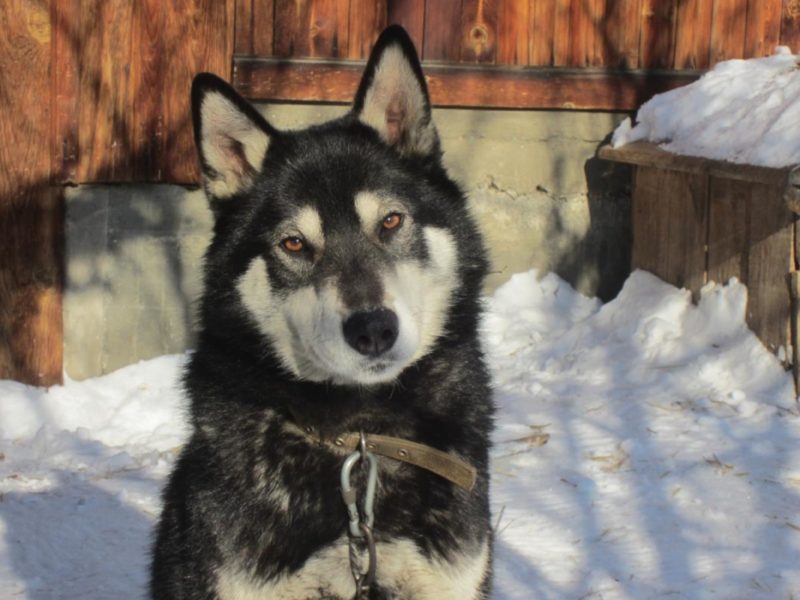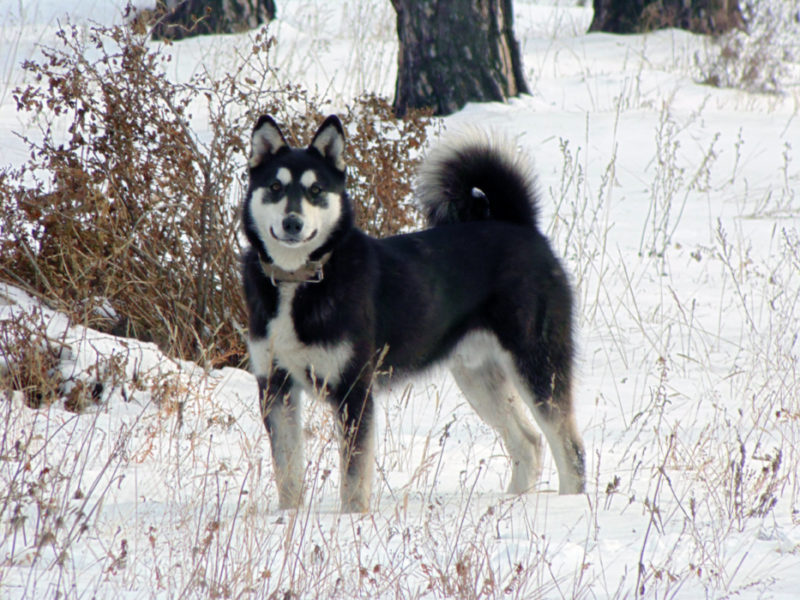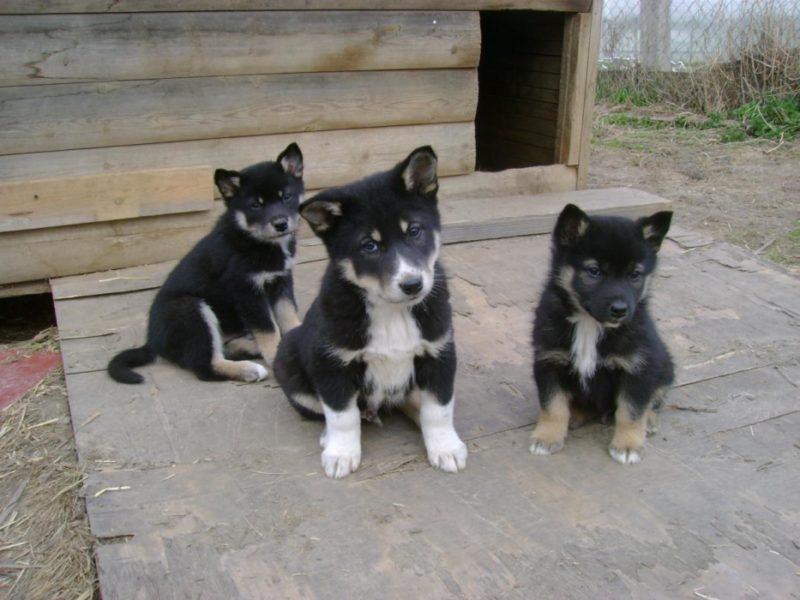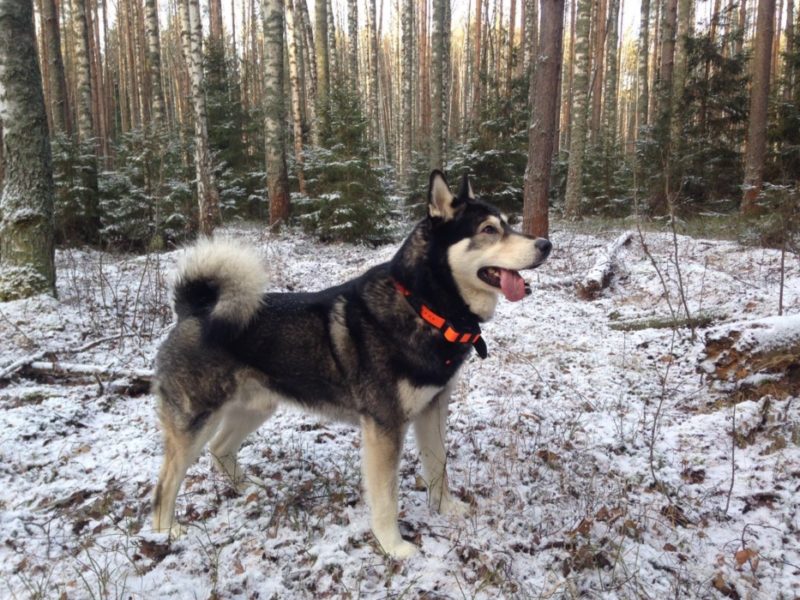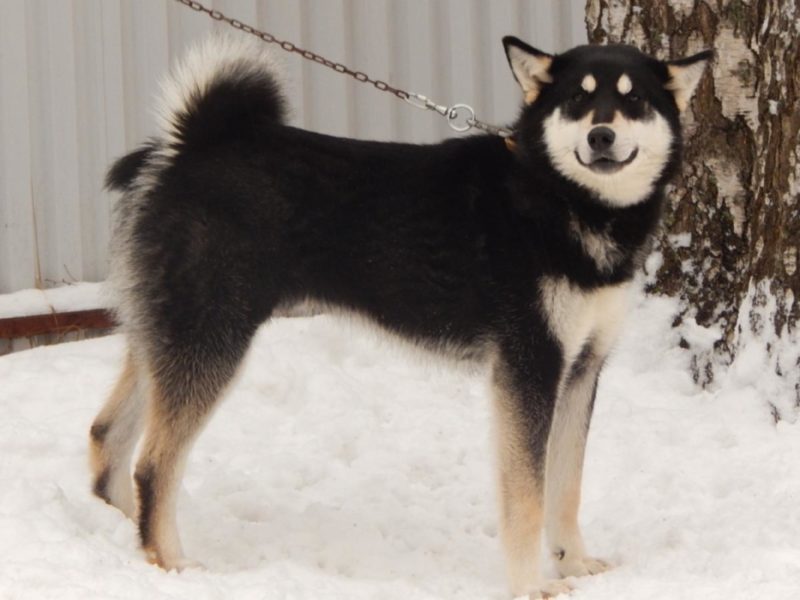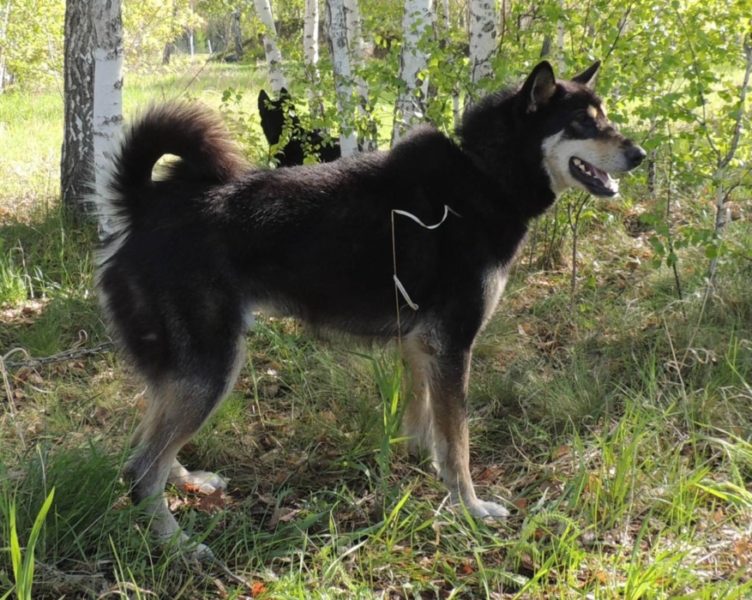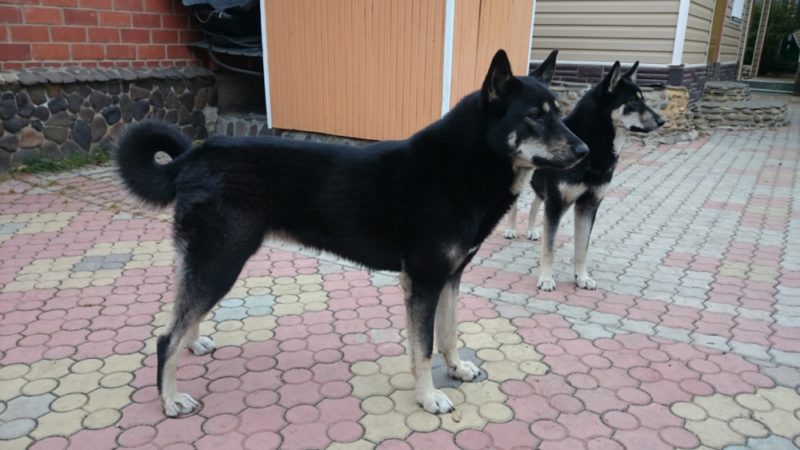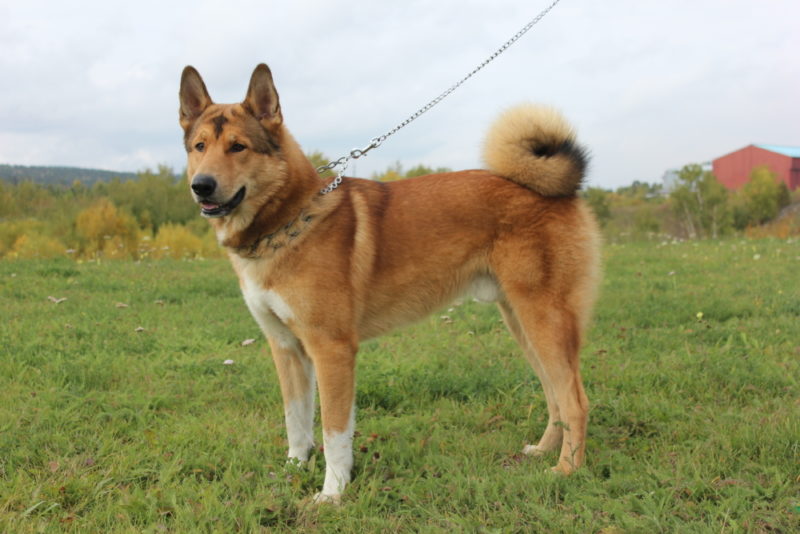The East Siberian Laika is a universal hunting dog, most common in Eastern Siberia, Amur Region, the Urals and the Far East. Despite the fact that this breed did not undergo targeted selection for a long time, over time it was possible to achieve almost perfect breed purity. Modern representatives are descendants of animals with outstanding hunting abilities that were not allowed to cross with other dogs. Due to this, to date, huskies are considered one of the best hunting breeds.
Material Content:
Breed description
Even in our time, this breed is not considered thoroughly studied, due to this, breeding is not too active, and the description of the breed may vary slightly in various sources. A small number of animals participate in the exhibitions - for example, in 2000, only 39 representatives of the East Siberian breed were registered.
These dogs are distinguished by excellent sense of smell and keen hearing, they rarely have problems with vision.
Growth at the withers of females reaches 53-61 centimeters, males - 55-63 centimeters, weight can vary normally from 18 to 23 kilograms.
Northern hunting dogs tend to have an active lifestyle, they are very mobile, and when moving they prefer running rather than a quiet step.
Compared to other types of huskies, the East Siberian reach puberty quite late.
Origin history
The ancestors of these huskies are northern sled dogs, which Evenki were engaged in breeding. The best individuals of approximately the same type were selected and subjected to thorough training and preservation of blood purity. Thus, by the 19th century the first representatives of this breed had already been bred, first described in 1895 by Prince A. A. Shirinsky-Shikhmatov. At the same time, the famous explorer Nansen Fridtjof acquired 26 likes for his expedition to the Arctic.
The first breed standard was designated in the middle of the XX century, by 1981 it was approved and became generally recognized in the territory of the Soviet Union, and later the whole world.
The main center for breeding East Siberian huskies is the city of Irkutsk. Here is registered the very first kennel where dogs of this breed are bred. Breeders have been active in dog breeding since 1960. To date, representatives of the breed participate in various exhibitions and hunting contests, where they confidently take first places.
The nature and behavior of the East Siberian husky
The individuals of this breed have a well developed orienting reflex, which makes them truly valuable hunting dogs. Their main feature is an increased ability to adapt, they can easily adapt to the environment, especially in the first months of their lives. Even though this breed is rooted in the northern regions, representatives of the East Siberian husky feel great in a different climate.
You can hunt dogs of this breed on almost any animal: they show themselves equally well when hunting both large predators and small animals. The main qualities of the dog’s character: courage and masculinity, loyalty to the owner, quickness and willingness to carry out commands.
For huskies, a high level of aggression is completely uncharacteristic: cases of attacking the owners or other people are extremely rare. In this case, after appropriate training from these dogs, excellent watchmen are obtained, sensitively reacting to strangers and warning of the invasion with a loud bark. At the same time, it is worth warning the owners that this is a very active and freedom-loving animal that does not feel well, being a long time on a leash.
This is a very hardy breed, in the northern regions it is still used in sledding.
Husky do not get along well with other animals: they only make contact with pets that have been growing with them all their lives. Unfortunately, this is a side effect of a highly developed hunting instinct.
Monthly growth chart
The growth and weight indicators of East Siberian husky puppies have not been officially recorded. However, when observing pets, it is recommended to adhere to the characteristics approved for dogs of the West Siberian breed according to VNIIOZ data (data are rounded to average values, it is recommended to consult the breeder or veterinarian with the exact norms of height and weight, focusing on the individual characteristics of the animal).
| AGE | THE WEIGHT | HEIGHT AT THE WALL |
|---|---|---|
| 1 month | 2, 20 kg | 27 cm |
| 2 months | 5.25 kg | 35 cm |
| 3 months | 8 kg | 41 cm |
| 4 months | 11 kg | 47 cm |
| 5 months | 14 kg | 52 cm |
| 6 months | 15.7 kg | 55 cm |
| 7 months | 16.5 kg | 56 cm |
| 8 months | 18 kg | 58 cm |
| 9 months | 19.5 kg | 59 cm |
| 10 months | 19.7 kg | 58-60 cm |
| 11 months | 20.2 kg | 58-60 cm |
| 12 months | 20-21 kg | Up to 61 cm |
A slight excess of weight is allowed compared to puppies of the West Siberian husky due to a more powerful skeleton and muscle mass. Up to six months, more active weight gain and faster growth are observed, and by 12 months the indicators smoothly reach the values relevant for an adult dog.
Breed standard and puppy selection
It is best to get a puppy in nurseries and from certified breeders: the availability of documentation for the animal will guarantee compliance with all breed standards.
The first thing you should pay attention to is pedigree and genetics.When choosing a dog for hunting, it is important to make sure that parents are actively involved in hunting activities and regularly go out to the beast. Then the puppy will have the corresponding makings from childhood. If the main goal is participation in exhibitions and keeping the dog at home, then a pure pedigree and strict compliance with breed standards will be enough. Of course, the plus is the presence of parents awards and victories in exhibitions and competitions.
The largest number of professional breeders and nurseries for breeding East Siberian huskies are in Siberia and the Far East, it is there that you can find the best representatives of the breed.
Description of the breed standard:
- Head sphenoid, the bone of the skull is wide, round, the total length of the muzzle should be equal to the length of the cranium.
- Nose small, black (in dogs with a light or white color, the color of the nose may be brown).
- Ears stand high, pointed, in the shape of triangles.
- Eyes small size, the look should not be distracted, the color of the iris is brown or almost black.
- Bite correct, smooth, all teeth in stock.
- Torso developed harmoniously, the muscle corset is strong, the bones are powerful and strong, the stomach is tightened, the chest is moderately wide.
- Limbs straight, parallel, fingers neatly brought together. According to breed standards, usually dewclaws are removed, but their presence is allowed.
- Tail medium length, wrapped in a ring.
- Wool two-layer, thick and rough, undercoat is well developed, softer to the touch.
The color is not very strict, black, white, gray or red color of the coat is allowed, as well as the presence of tan and spots on the legs.
Features of keeping a dog
East Siberian Laika - the dog is very active, it often needs to be in motion. Therefore, the best solution for maintenance will be a private house with a plot and an aviary, where the animal will be able to satisfy its need for constant movement. At the same time, it is possible to keep in a spacious city apartment - in this case, it is important to ensure a regular and fairly long walk with active games and activities. During walks, you can not let the pet off the leash, especially in urban environments.
This dog is best suited for people leading an active lifestyle, avid hunters, tourists. She will make the company on a long hike or hunting trip, as well as jogging. If you like peace and quiet or rarely stay at home - it is better to consider another option for a pet.
In a small apartment, a dog of this breed will not be able to move normally, due to which it can cause unintentional harm to the home environment.
It is allowed to keep huskies as a guard animal, provided that the dog does not sit on a leash for a long time - this negatively affects the health and mood of the pet.
Care, health, feeding
Laikes of the East Siberian breed need careful grooming - you need to regularly wash and comb the animal. Bathing these dogs is not difficult - due to the natural characteristics of the coat, they usually look clean even after long walks, so you can do with general hygiene procedures on a regular basis.
Combing is carried out at least twice a week using a special comb or furminator.
If the dog lives in an apartment, it must be remembered that representatives of this breed molt twice a year and are extremely plentiful - therefore, unfortunately, a large amount of lost hair cannot be avoided.
If you go hunting or hiking with your dog, after each trip to the countryside you must carefully inspect your pet, scrub wool from debris and check for ticks and other parasites.In no case should vaccine be neglected, as is the case with other animals that spend a lot of time outdoors.
Huskies are picky about food and almost omnivorous, however, this does not mean that you can regularly feed the animal with products from its own table. The diet of the dog must be carefully monitored, it is imperative that the dog remains in shape and does not overeat. Typically, the daily portion by weight should be about 3% of the total weight of the animal. With active physical exertion (for example, for riding huskies or hunters), it is increased by 1/3.
The basis of the diet is meat. Boiled pulp, offal, boiled bones are allowed. When keeping the dog outside the house during the cold season, animal fats are added in moderation.
There must be vegetables that are best chopped to a puree condition. Porridge with the addition of meat and vegetable components is well suited.
You can feed your pet with prepared feeds, however, in no case should you give the animal a cheap low-quality composition. It contains a large number of preservatives and dyes, and nutritional value does not meet the norms of feeding.
It is imperative that there is a sufficient amount of clean fresh water; the bowl of liquid should always be full.
Separately, we should dwell on the issue of pet health.
Like any other breed, East European husky requires regular preventive examinations by a veterinarian. Fortunately, these dogs have a constitution that is strong by nature and high immunity, therefore they are spared from specific diseases. Usually, owners are faced with problems getting injured during active walks, infection with parasites or the consequences of dishonest care.
Parenting and training
Huskies are very faithful animals, they remain faithful to their master all their lives. But it must be remembered that from a very early age obedience and willingness to fulfill commands must be developed. There is a rule of hunting breeds - a dog must have one owner. If the animal understands this from an early age, many serious problems can be avoided. It is enough that one person will fulfill the basic obligations for caring for animals.
This breed is distinguished by high intelligence, so there should be no difficulties with training, provided that it is performed regularly. It is advisable to work out new teams in a game form with each walk and consolidate the acquired skills.
Be sure to teach the animal basic guidelines, such as "Sit", "Lie", "Do not." This is the base that every dog must learn.
If you plan to raise a hunting dog, you will need to visit specialized training programs, they can be recommended by the breeder from whom the puppy was purchased. Hunting breeds, including the East Siberian husky, are trained in about 7 months.
Training together with your pet will help you quickly find a common language and bring up a faithful friend who is ready to come to the aid.
Pros and cons of East Siberian husky
The main advantages of the breed include loyalty and devotion to one owner, high intelligence and endurance. You can really rely on such a dog.
This is a great companion in any activity, a friend of hunters, fishermen and tourists who is not afraid of long walks and serious loads.
East Siberian huskies are distinguished by excellent health, are not susceptible to genetic diseases, have high immunity.
Of the minuses, it is worth noting a very masterful character and, as a result, a tendency to shoots from the owner. To prevent this, one should not let the dog off the leash during city walks, and when kept in the aviary, make sure that all exits are reliably blocked.
It is difficult for huskies of this breed to accept other pets, therefore it is recommended to keep only one animal or try to have pets at the same time to give them the opportunity to meet in early childhood.


